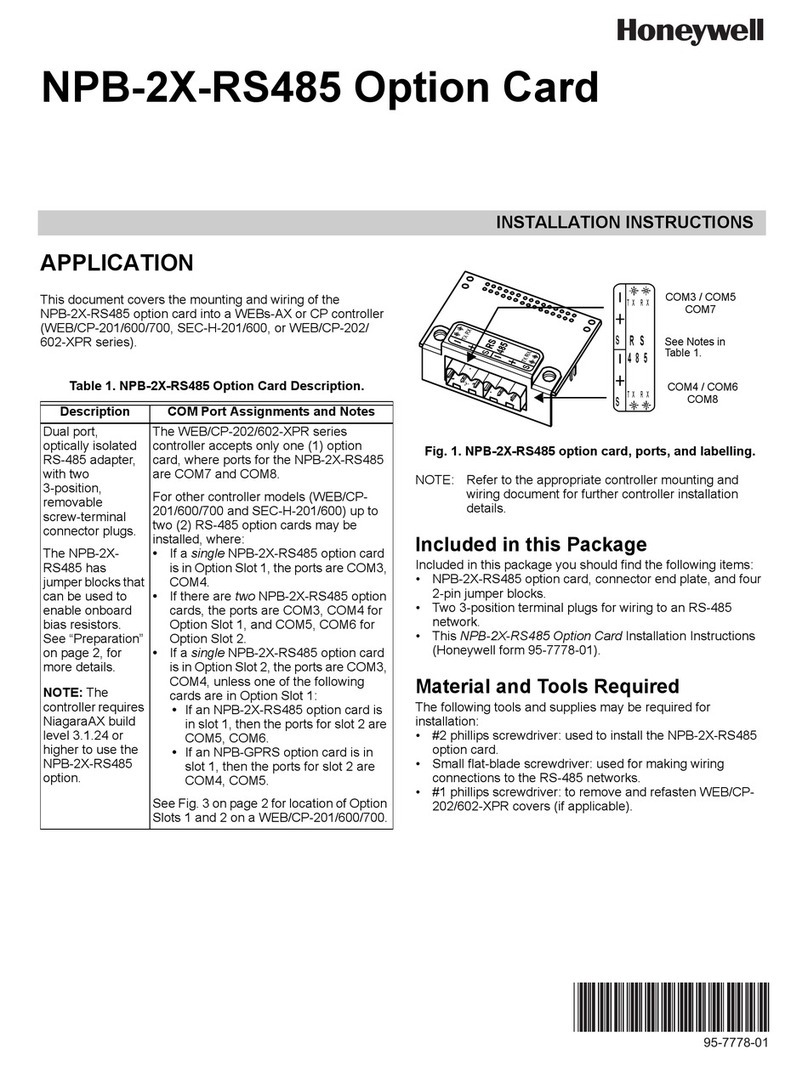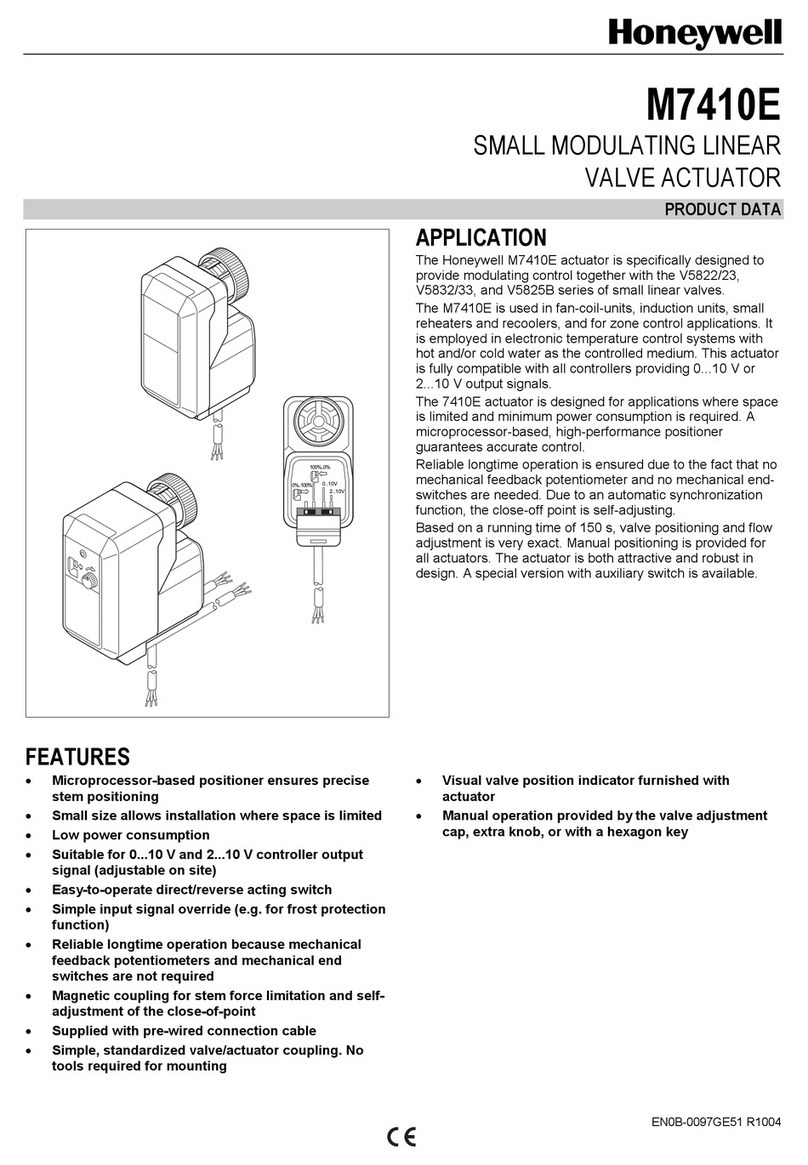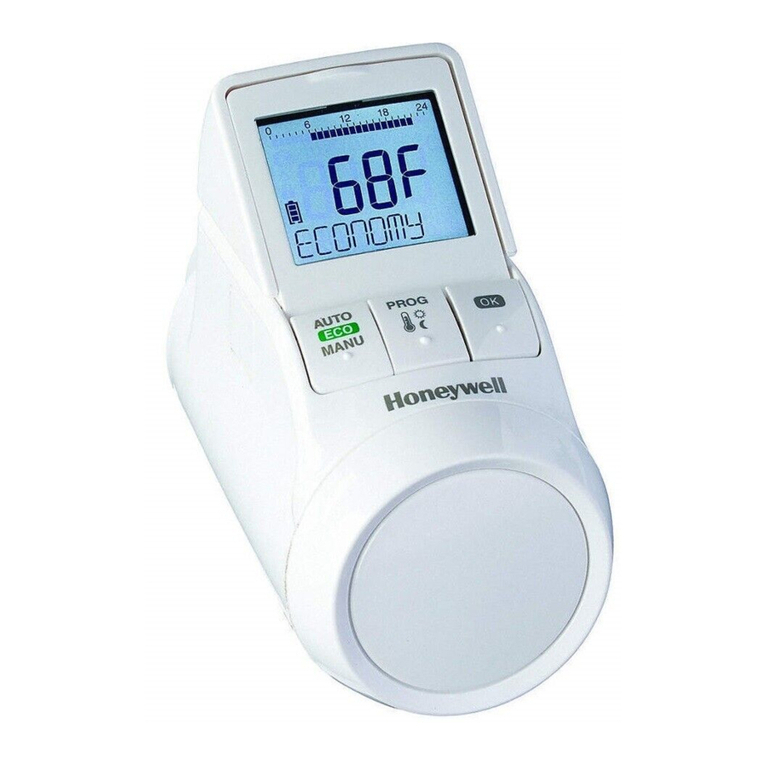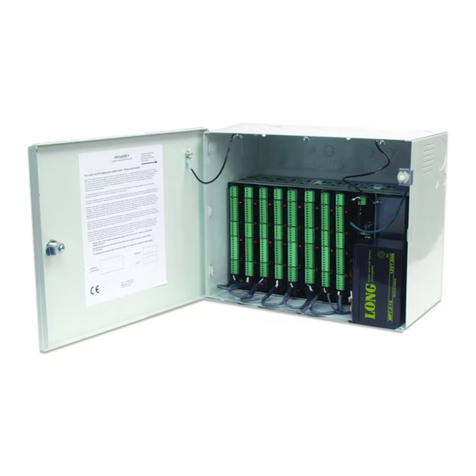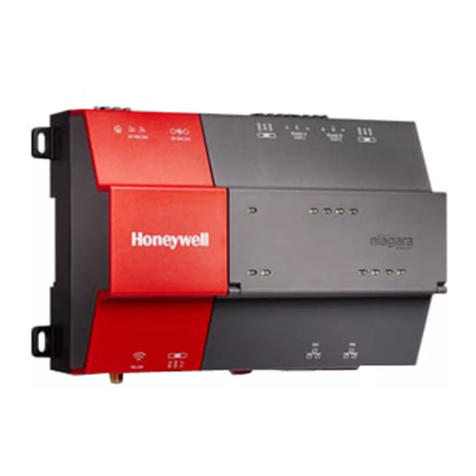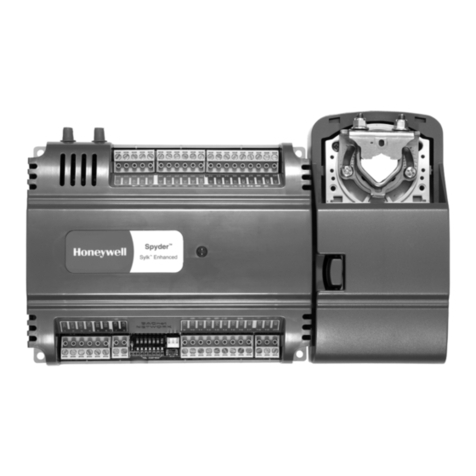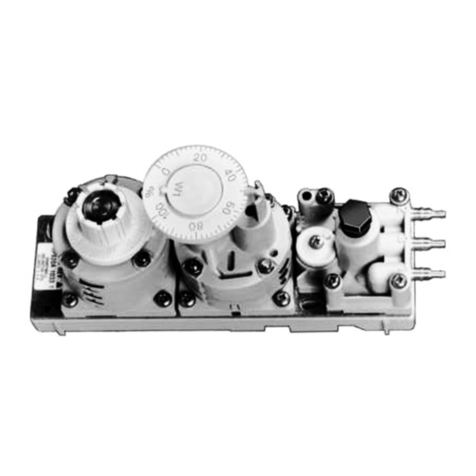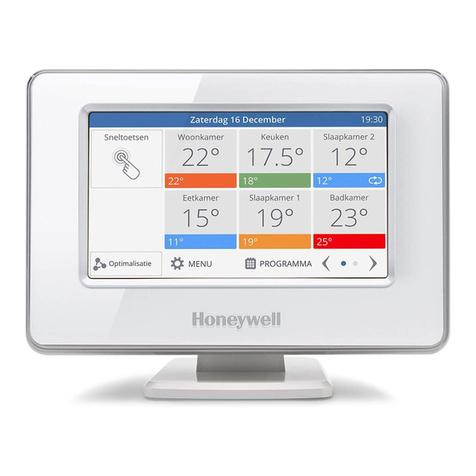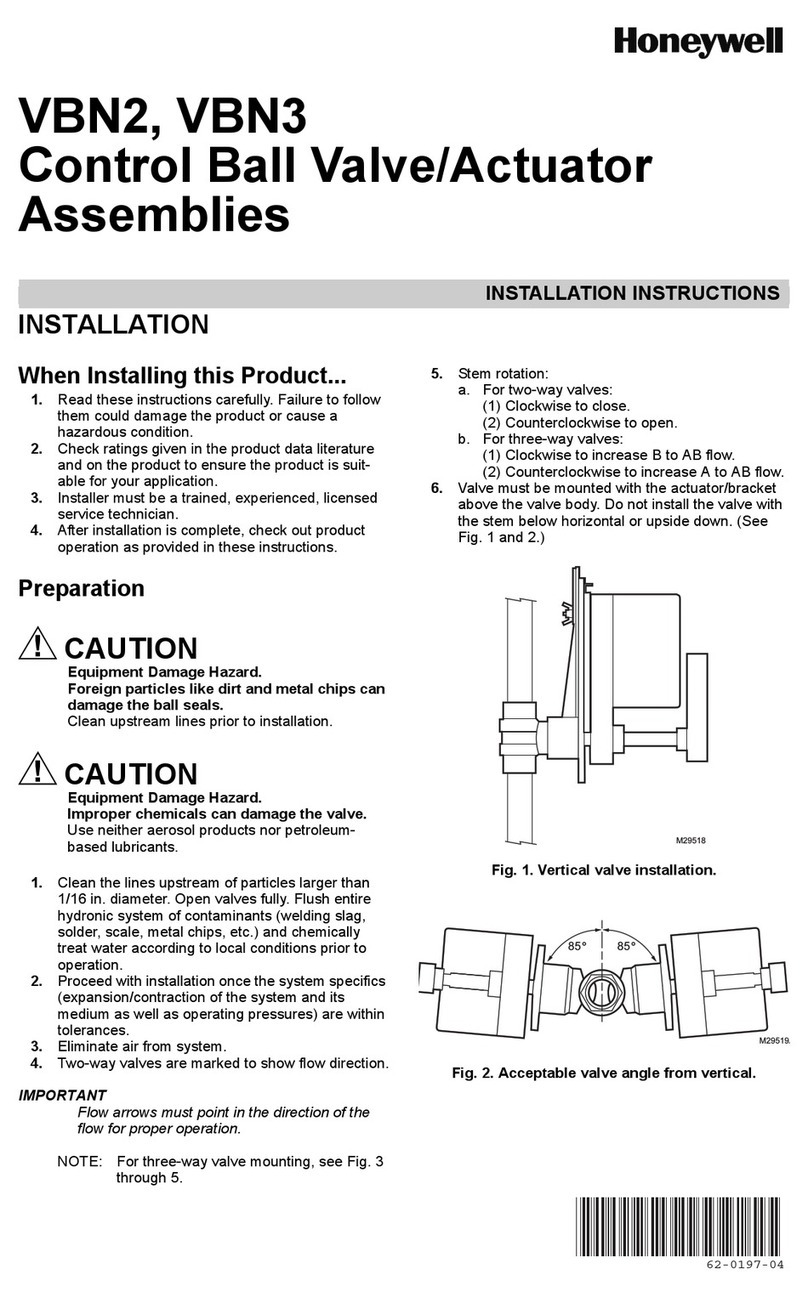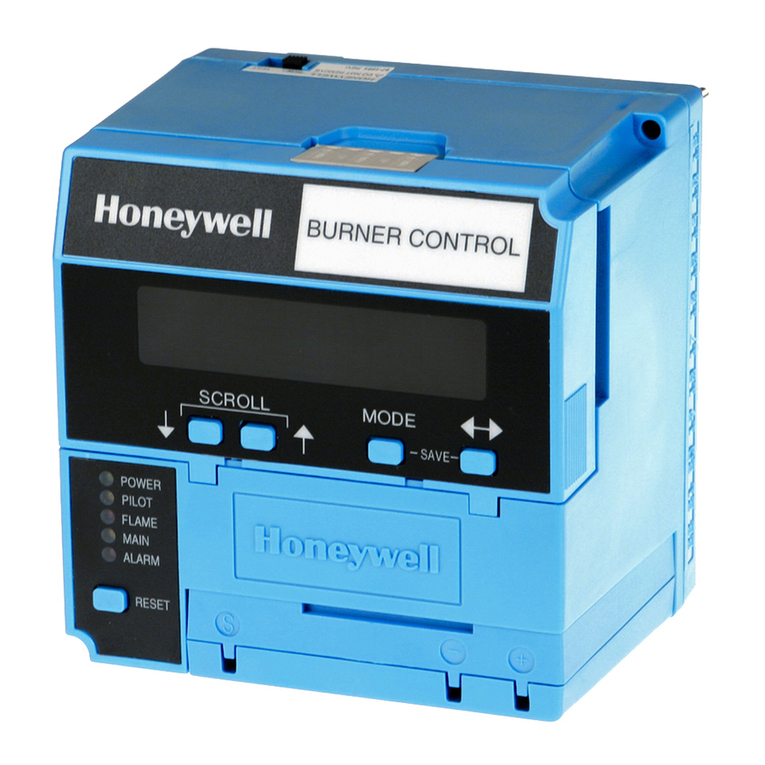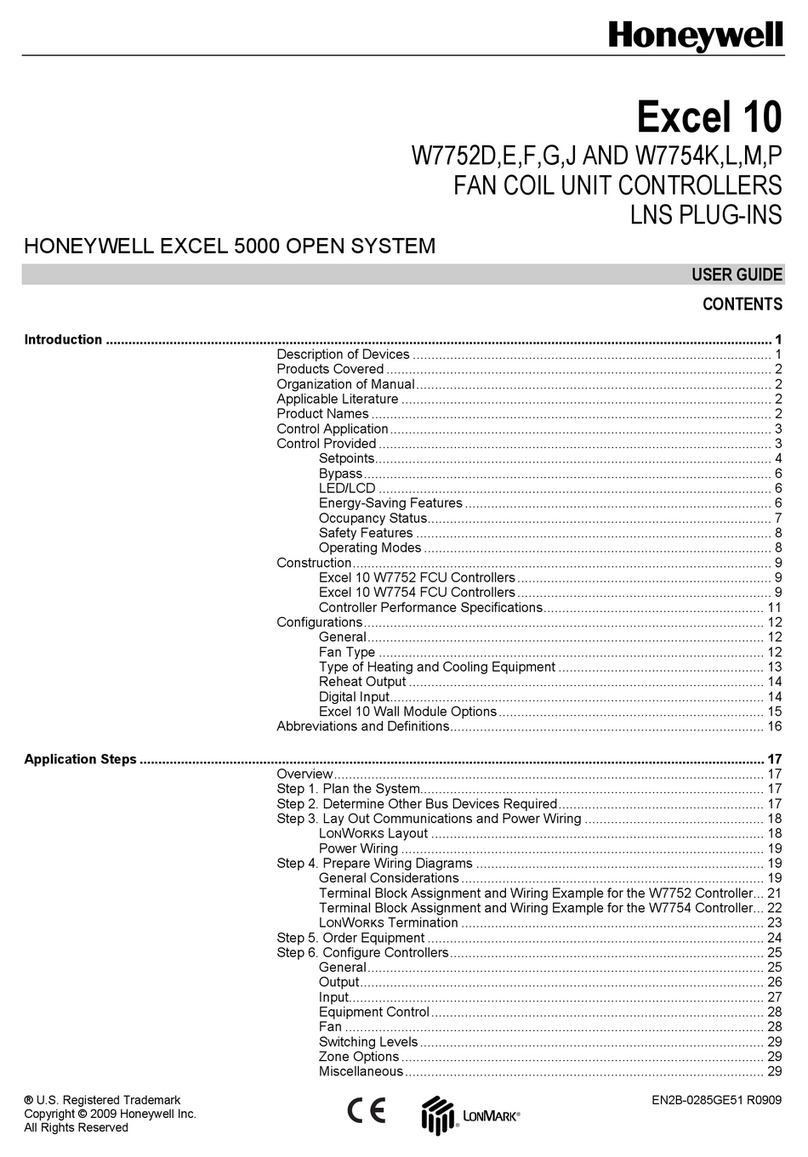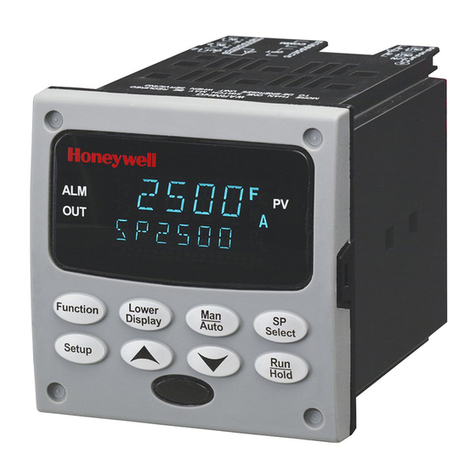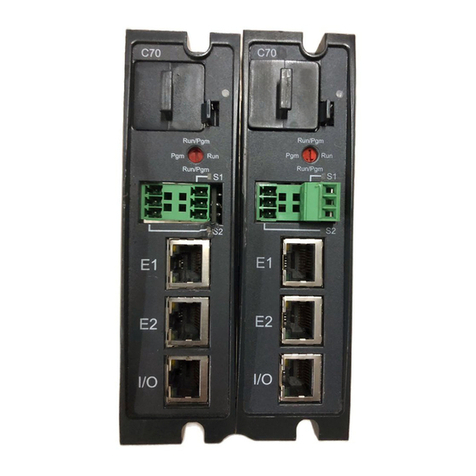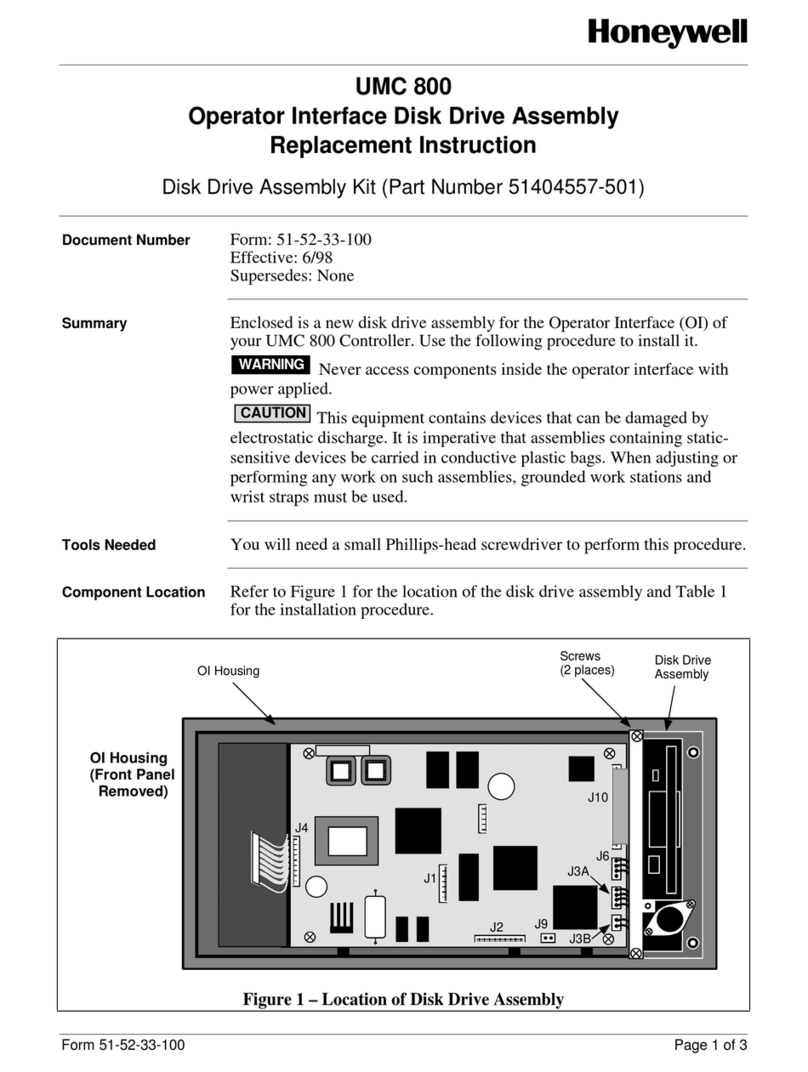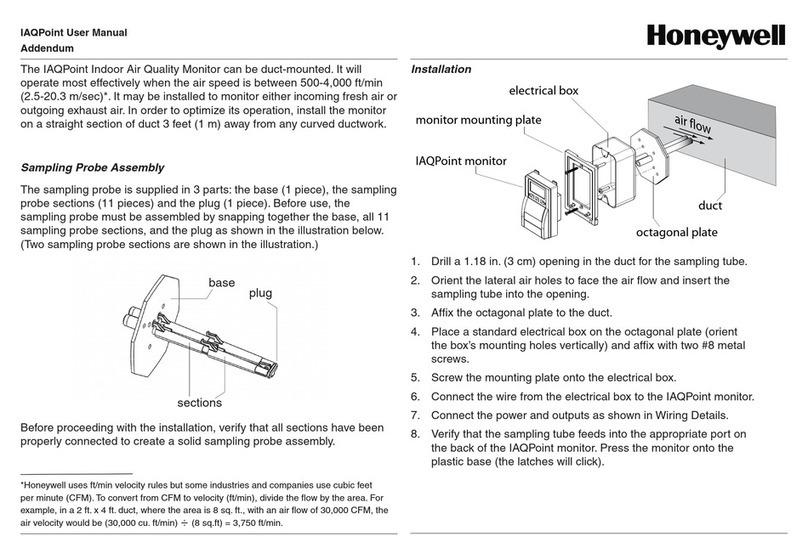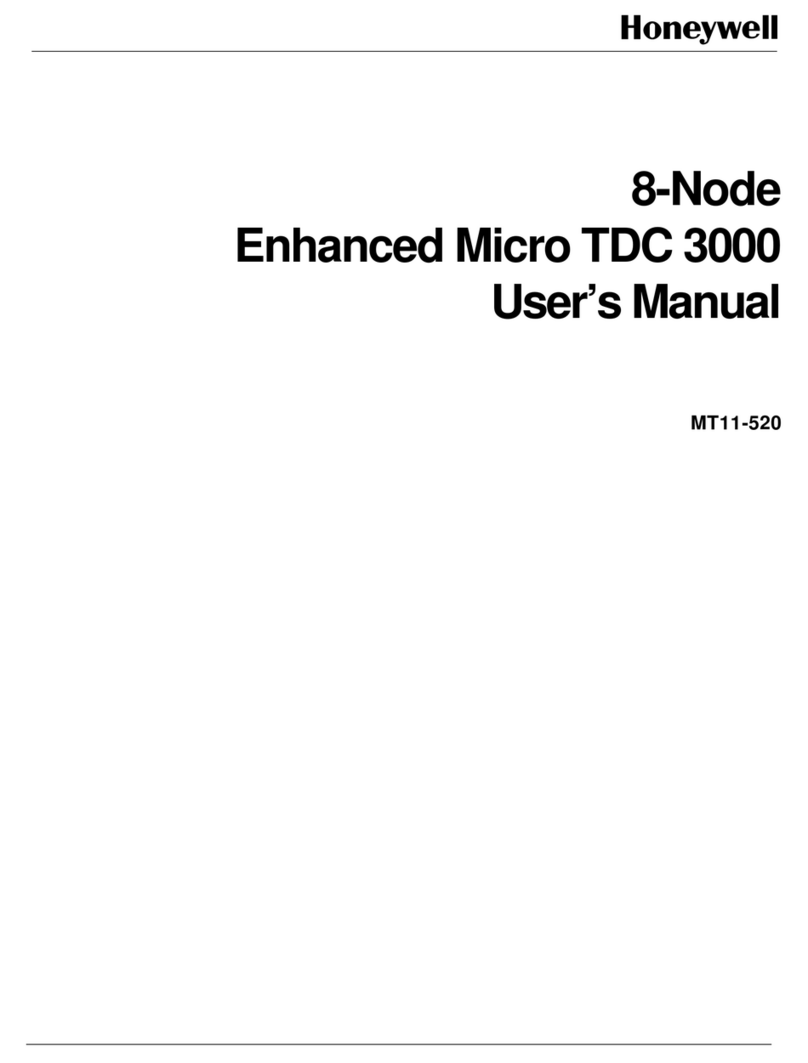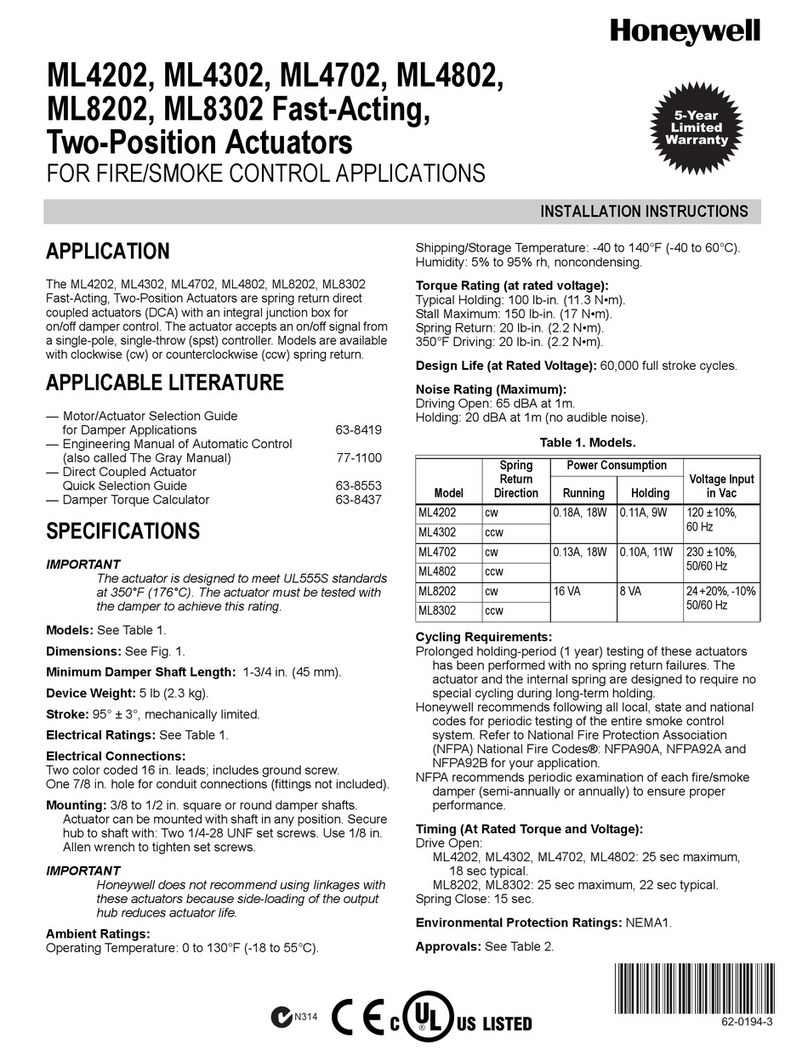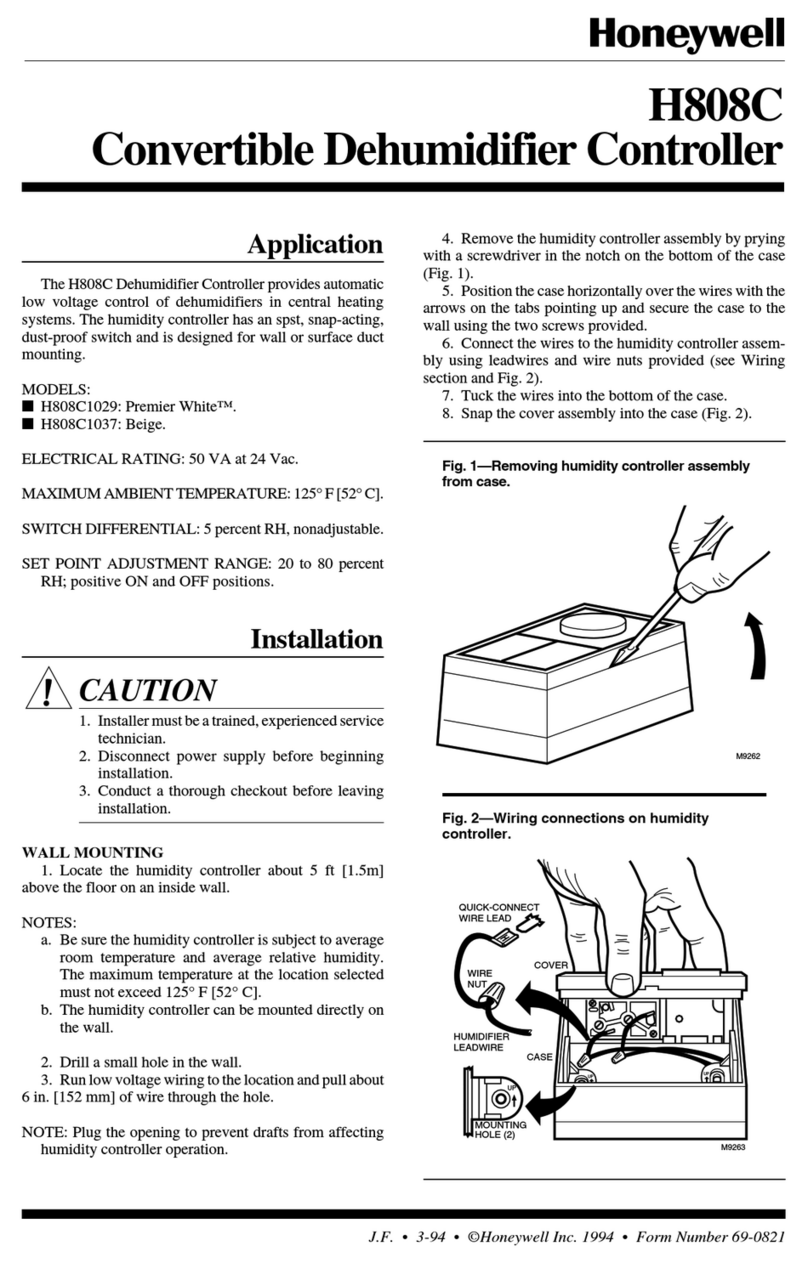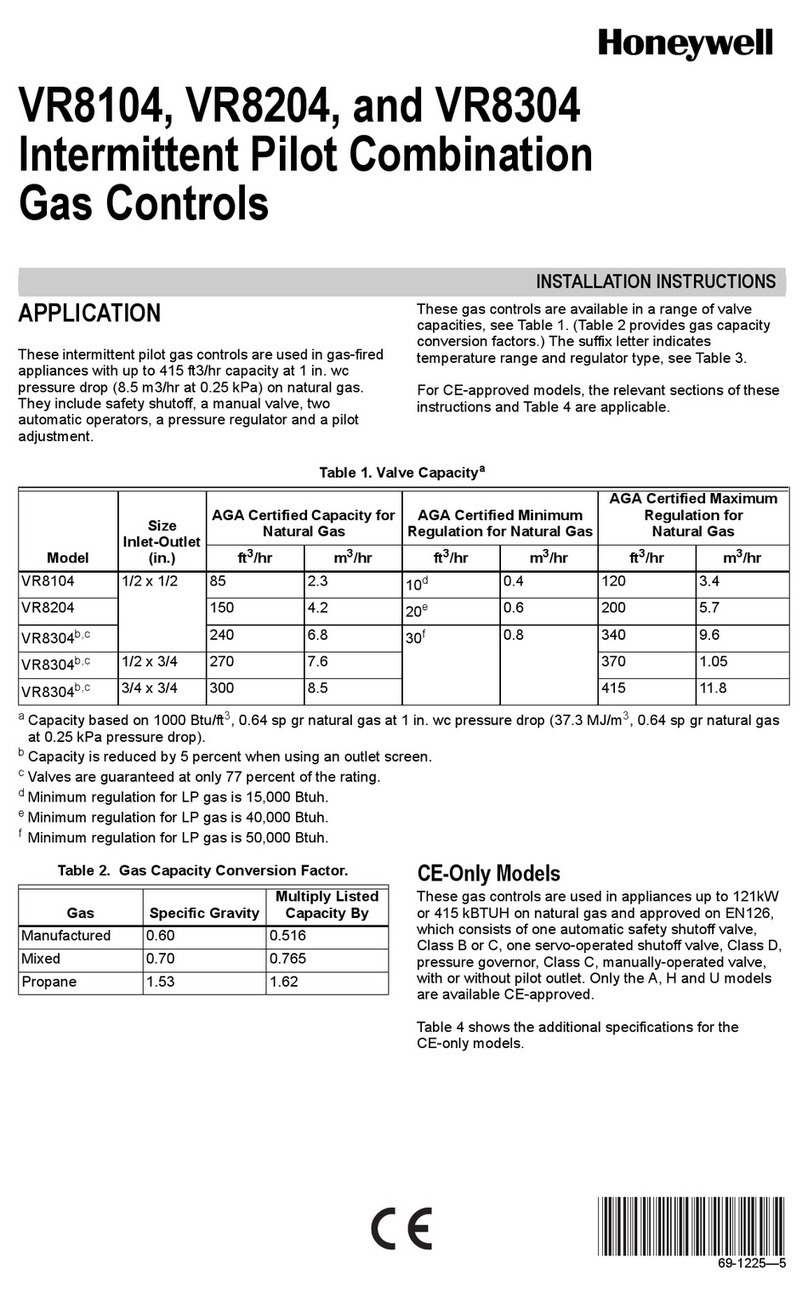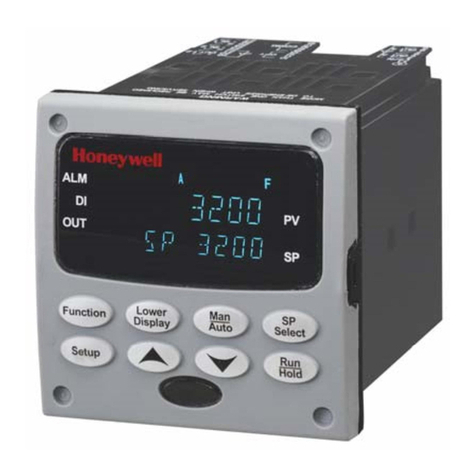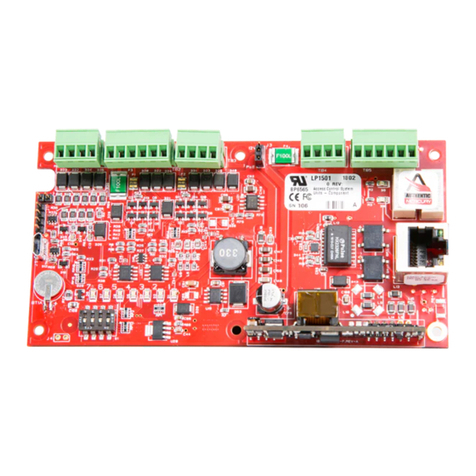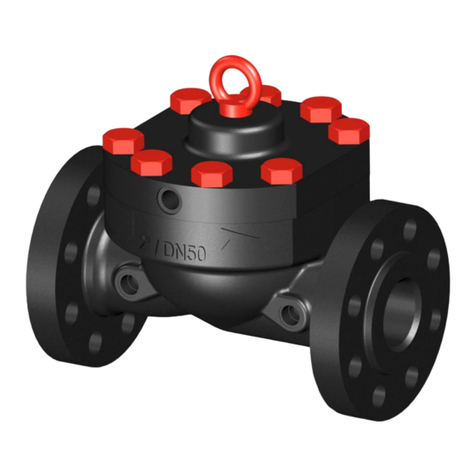
7 69-0696—1
Maintenance
WARNING
FIRE OR EXPLOSION HAZARD
CAN CAUSE PROPERTY DAMAGE,
SEVERE INJURY, OR DEATH
Improper cleaning or reassembly can cause gas
leakage.When cleaning, besure thatthe control is
reassembled properly and perform gas leak test.
Regularpreventivemaintenanceisimportant in applica-
tions such as commercial cooking, agricultural and indus-
trial operations that place a heavy load on system controls
because:
• In many such applications, particularly commercial
cooking, the equipment operates 100,000 to 200,000
cycles per year. Such heavy cycling can wear out the
gas control in one to two years.
• Exposure to water, dirt, chemicals and heat can dam-
agethe gas controland shutdown the control system.
Themaintenance program shouldincluderegularcheck-
out of the gas control; see Startup and Checkout, section.
To check out the control system, see the appliance manufac-
turer literature. Maintenance frequency must be determined
individually for each application. Some considerations are:
•Cyclingfrequency.Appliancesthatmaycycle100,000
times annually should be checked monthly.
•Intermittent use. Appliances that are used seasonally
shouldbe checkedbefore shutdownand again before
the next use.
•Consequence of unexpected shutdown. Where the
cost of an unexpected shutdown would be high, the
system should be checked more often.
•Dusty, wet, or corrosive environment. Since these
environmentscan cause the gas control to deteriorate
more rapidly, the system should be checked more
often.
If the gas control will be exposed to high ammonia
conditions; i.e., those used in greenhouses or animal barns,
contact your Honeywell sales representative to request a
gas control with corrosion resistant construction.
The gas control should be replaced if:
• It does not perform properly on checkout or
troubleshooting.
• The gas control knob is hard to turn or push down, or
it fails to pop back up when released.
• The gas control is likely to have operated for more
than 200,000 cycles.
Service
WARNING
FIRE OR EXPLOSION HAZARD
CAN CAUSE PROPERTY DAMAGE,
SEVERE INJURY OR DEATH
Do not disassemble the gas control; it contains no
replaceable components. Attempted disassembly
or repair can damage the gas control.
CAUTION
Do not apply a jumper across or short the valve
coil terminals. Doing so may burn out the heat
anticipator in the thermostat or damage the elec-
tronic module.
IMPORTANT: Allow 60 seconds after shutdown before
re-energizing step-opening model to assure lightoff
at step pressure.
IF MAIN BURNER WILL NOT COME ON WITH
CALL FOR HEAT
1. Makesure the gas control knob is in the ON position.
2. Adjust the thermostat several degrees above room
temperature.
3. Using an ac voltmeter, check for voltage across L1
and L2 terminals of the gas control.
4. If voltage is not present, check control circuit for
proper operation.
5. If proper control circuit voltage is present, replace
gas control.
INSTRUCTIONS TO THE HOMEOWNER (FOR
YOUR SAFETY, READ BEFORE OPERATING)
WARNING
FIRE OR EXPLOSION HAZARD
CAN CAUSE PROPERTY DAMAGE,
SEVERE INJURY, OR DEATH
Follow these warnings exactly:
1. Before lighting main burner, smell around the
appliance for gas. Be sure to smell next to the
floor because LP gas is heavier than air.
2. IF YOU SMELL GAS:
• Turn off the gas supply at the appliance ser-
vice valve. On LP gas systems, turn off gas
supply at the gas tank.
• Do not light any appliances in the house.
• Do not touch electrical switches or use the
phone.
• Leave the building and use a neighbor’s
phone to call your gas supplier.
• If you can not reach your gas supplier, call
the fire department.
3. Do not force the gas control knob. Use only
your hand to push down or turn the gas control
knob. Never use any tools. If the gas control
knob will not operate by hand, call a qualified
service technician to replace the gas control.
Forceor attempted repairmay resultina fireor
explosion.
4. Call a qualified service technician to replace
the gas control if it has been flooded with
water.
5. Replace the gas control in the event of any
physical damage, tampering, bent terminals,
missing or broken parts, stripped threads, or
evidence of exposure to heat.
